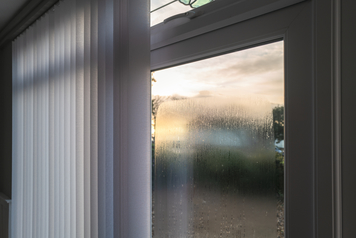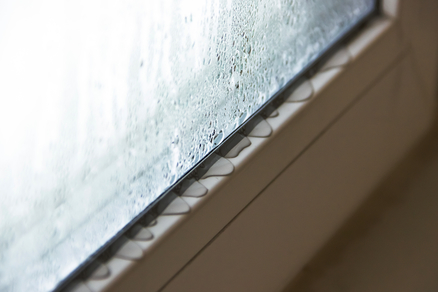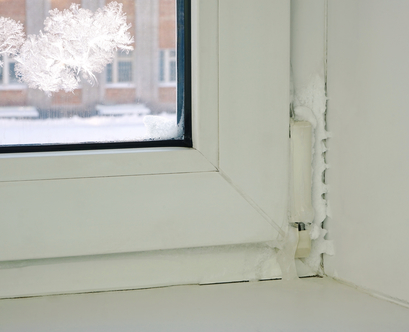What Causes Window Condensation, and Ways to Make It Stop
Window condensation is one of our top three complains about existing windows. Condensation typically starts off as an irritant, but then evolves into a perpetual problem that can lead to home damage, and potentially negative health impacts. Condensation can cause wood framing and ledges to rot or grow mold and can also damage plaster. This excess moisture in your home can cause damage to your entire home, not just the areas immediately surrounding your windows.
There are three places that condensation can occur inside the home, outside the home, and in between glass panes.
Exterior Window Condensation – The Good Type

Exterior window condensation is the least damaging and often occurs early in summer mornings, when the window is cooler than the dew point causing the water in the air to form small droplets. This type of condensation can occur at any time of the year and is a natural occurrence.
Exterior condensation is a good thing and is demonstrating that your windows are performing exactly as designed. Energy efficient windows are so well insulated that warm temperatures in the home are not allowed to penetrate the insulated glass and heat the exterior pane. As a result, the exterior glass temperature pane may fall below the dew point of the outside air and condensation can develop.
Exterior window condensation is not a sign of a faulty window and will evaporate as the day warms.
Ways to reduce exterior condensation:
- Clean with Rain X to allow the water to wick off surface
- Wait until the day warms so the condensation evaporates naturally
Interior Window Condensation – The Bad Type

Interior window condensation is caused by excessive moisture/ humidity in the home, and is typically seen in the winter, when the warm moist air condenses on the cold windows.
Everyday activities can add moisture to the air including, cooking, showering, washing dishes, and doing laundry.
Ways to reduce condensation in your home:
- Use a dehumidifier
- Cover cooking pots to keep humidity contained in the pot
- Run the exhaust fan while cooking
- Keep the bathroom fan on until the room is no longer humid
- Keep interior doors open to allow effective air transfer in your home
- Run a fan
Condensation Between Windowpanes – The Very Bad Type

Condensation between windowpanes occurs when the spacer / seal between the panes is broken and allows air and humidity between the two panes. This can be something that first appears seasonal, but over many cycles of condensation and evaporation between the glass panes can cause the glass to slowly haze between the glass panes.
There are only two options when condensation occurs between the windowpanes.
- Replace the windowpanes – The two panes must be replaced, and a new spacer and seal installed to prevent the transfer of air and moisture.
- Replace the entire window – In some cases, where the window glass is not able to be effectively replaced, the entire window should be removed and replaced. This is typically the best option in cases where the windows are old and other conditions such as rot or degradation have occurred.
Over the decade window technology has greatly evolved so depending on your window fixture other benefits can be observed with window replacement as well.
If you are considering replacement windows for your home, we offer high quality windows and doors. Check out our window replacement cost tool to help understand what your project may cost.
